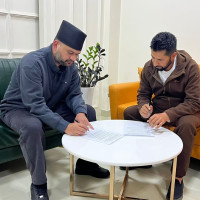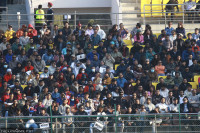Opinion
Ambition without vision
Painful and drastic reforms are needed in the NEA and NOC to realise energy goals
The economic devastation caused by the April 2015 earthquake and the four-month-long blockade has reignited discussion over production, import diversification and economic self-sufficiency. Ministers have been making bold statements about self-sufficiency, and Prime Minister KP Oli even promised that his government would end load-shedding within one year and connect every house to a gas pipeline. This will be nothing more than a pipe dream, mainly due to the unwillingness to overhaul the management, jurisdiction and operations of the Nepal Electricity Authority (NEA) Nepal Oil Corporation (NOC).
Binding constraint
The most binding constraint to economic growth is inadequate infrastructure, especially power supplies. This is not only slowing industrial activities but also leading to an increase in expensive fuel imports. Oil accounts for about 20 percent of the country’s total imports of about $1 billion annually and is larger than the total value of merchandise exports. The cost of production using imported fuel—procured and distributed through NOC—is expensive relative to hydroelectricity, and hence prices of goods and services are also relatively higher compared to the global average.
Against this backdrop, the biggest policy bang for the buck lies in accelerating electricity generation, both hydropower and alternative sources such as solar and wind. This will not only reduce demand for imported fuel but also boost fiscal revenues and economic growth and create new jobs. However, over the past 100 plus years, very little has been achieved due to the politicisation of the entire sector. The pioneer Pharping hydropower station started generating electricity on May 22, 1911. Without improving the management and financial and operational efficiency of the NEA and NOC, energy self-sufficiency will continue to remain a distant dream. Despite all the promises, politicians have shown little credible interest in overhauling these two public enterprises because it could antagonise party lobbyists, unions and syndicates, and also because they provide employment for cronies and periodic financial bonanzas.
The NEA and NOC more or less have a monopoly on the procurement and distribution of electricity and fuel respectively. They are operating without competitors and fixing the delivery quantity on their own. This leaves a huge space for financial and distribution misgovernance, often with the tacit support of politicians and lobbyists. Both the public enterprises are financially bankrupt. The NEA’s operating loss amounted to about 0.4 percent of the GDP in fiscal 2015. About Rs27 billion in outstanding debts was written off in fiscal 2012 to make it financially viable and worthy for investor consideration. However, it continues to accumulate losses as electricity prices are not adjusted to reflect the cost of production or purchase. Meantime, little has been done to reduce technical losses. Nepal has one of the highest technical loss rates in the world. The total peak time supply barely meets 55 percent of total demand, leading to load-shedding lasting 12-16 hours a day.
NOC is in an even more perilous state as it has no long-term investment assets to bank on for revenues. The management and distribution inefficiency and the mismatch between the buying and selling prices of fuel and gas have turned NOC into an infamously inefficient public enterprise. In fiscal 2014, its losses amounted to about 0.4 percent of the GDP as domestic fuel and gas prices were kept low despite high international prices. With international oil prices dropping over the past year resulting in a reluctant downward adjustment of domestic fuel prices, NOC is in much better shape now. Although its accumulated debt amounts to about 1.12 percent of the GDP, it is planning to distribute bonuses from the revenues earned by charging high prices with the commitment to cover past losses.
Hollow commitments
Any political commitment or speech on reforming these two public enterprises is additional political capital for the parties, and they have not shied away from capitalising on that. During the election campaign for the second Constituent Assembly, the Nepali Congress promised to generate 5,000 MW of electricity within five years and achieve an economic growth rate of eight to 10 percent. The UML promised to complete all major hydropower projects, both storage and run-of-the-river types, within 10 years by involving the private sector and also end load-shedding in five years. Likewise, the UCPN (Maoist) promised to end load-shedding in three years and produce 10,000 MW, 20,000 MW and 25,000 MW in the next 10, 20 and 40 years respectively.
Lately, the government has been promising to end load-shedding within a year, mostly by importing power from India, and generate 10,000 MW within 10 years by declaring an Energy Emergency. There was a similar declaration in 2008 followed by a 10-Year Hydropower Development Plan in 2009. Also, the government has allowed the private sector to procure and distribute fuel, technically breaking the monopoly of NOC.
Painful reforms
Many painful and drastic reforms are needed to realise even a fraction of these promises. Unfortunately, the political parties are slow and also have been unwilling to stop representing special interest groups. This is the main reason behind delays in project cost evaluation, prolonged and contentious procurement (a former energy minister even usurped the NEA’s management jurisdiction), and trading of generation licences. Politically-affiliated unions in the NEA and affiliates in the districts are further complicating the situation by demanding unjustified compensation and shares. Similarly, NOC has been a prime earning source for unscrupulous traders and political affiliates.
The bureaucracy is more hesitant than before to complete procurement and necessary project clearances on time. There are delays in constructing transmission lines and signing power purchase agreements. The planned pacts have been put on hold due to the misguided belief that the country will have surplus power during the wet season from fiscal 2018. Demand for electricity is never linear in an energy-hungry country like Nepal. Electricity is an alternative source of energy to fuel and is convenient as well as relatively cheap. Hence, demand for electricity jumped sharply after the fuel blockade causing the NEA’s street transformers to explode. The actual latent demand for electricity is much higher than what the NEA has estimated.
Painful reforms are needed to reform the NEA and NOC and the sectors they represent. To avoid irregularities, discretionary powers of the ministry and management should be minimised, and a rule-based system (breaking up production, transmission and distribution aspects), inscribed in an act, should be enforced.
This means overhauling procurement processes, requirements for preliminary project assessment and inter-ministry and inter-department coordination. Efficient and responsible human resources and politics-free decision-making and operations are also required. Unfortunately, this is easier said than done.
Sapkota is an economist




 7.12°C Kathmandu
7.12°C Kathmandu








%20(1).jpg&w=300&height=200)

